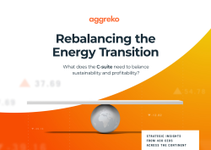Humid, noisy, and with a distinct smell of refuse, London Energy’s EcoPark Energy from Waste (EfW) facility is very much an analogue throwback.
Located off the Lee Navigation in Edmonton, North London, it is the UK’s oldest EfW plant. Commissioned in 1971 by the Greater London Council, the plant handles unrecycled waste from seven London boroughs: Barnet, Camden, Enfield, Islington, Hackney, Haringey, and Waltham Forest.
Trucks idle up to the plant like clockwork, unloading countless bags of black bag waste, which is funnelled through the plant and dropped into one of its five boilers via massive cranes, where it is incinerated. According to the head of the energy center at London Energy, Kyran Barker, upwards of 500,000 tonnes of black bag waste are incinerated every year.
The contents of each bag are highly variable, as no additional sorting takes place before combustion. This leads to, on occasion, foreign objects finding themselves in the furnaces, including batteries, propane tanks, and even car parts, which has led to on occasion combustion within the furnaces, which the control room team tells DCD creates quite the light show. We saw no such fireworks on our visit.
In order to mitigate the emissions, a dedicated control room is on hand. This is where the digital world meets the analogue workings of the plant, with the control room decked out with numerous monitoring systems that help mitigate harmful emissions. They include electrostatic precipitators that use an electric charge to attract the dust particles generated by the flue gas, and further filtering before the gas is released from the chimney stack.
Despite the plant being designed primarily as a waste disposal facility, its role as a power generation asset has grown in importance, following the spike in energy prices due to Russia’s invasion of Ukraine.
While EfW has long held the reputation of a “dirty” fuel source, its baseload generation profile is highly attractive to industries seeking reliable, consistent power, like data centers. One company to recognize EfW potential as a primary power option is Ark Data Centres, which in 2019 signed a long-term Power Purchase Agreement (PPA) to power its nearby Meridian Park data center via a private high-voltage connection directly from London Energy’s EcoPar.
DCD was granted a guided tour of both facilities by Kyran Barker, head of the energy center at London Energy, and Pip Squire, Ark’s head of sustainability.
Energy from Waste
The Ecopark converts waste into energy through a simple process, burning black bag waste to generate saturated steam, which is superheated to 450°C (450°F). This steam powers five turbines operating in an n+1 configuration, always having one extra generator available for redundancy, with a total generating capacity of 40MW.
The generated electricity is fed into a high-voltage copper busbar, with 15 percent of the generation used to power the plant’s operations and the remaining 85 percent exported via four output cables. Two cables feed into the UK power grid, while the other two – dubbed Ark 1 and Ark 2 – deliver electricity via a private wire connection directly to the Ark facility located right next door.
Commissioned at the end of 2020, The Ark Meridian Park data center is a colocation facility offering 16MW of IT load. It serves one undisclosed hyperscale customer, as well as Ark’s Crown Hosting joint venture with the UK government.
According to Squire, Ark had a long-term interest in powering a data center from an EfW plant, viewing it as a novel and reliable alternative to a grid-connected facility. Ark initially considered another unnamed EfW plant but was unable to secure land adjacent, leading to the decision to build the Meridian facility after a plot of land right next door to the Edmonton EcoPark came onto the market.
Described by Squire as a “unique opportunity,” the proximity of land so close to the plant offered Ark an unusually direct energy source, which factored into the planning of the facility.
Before committing to the development of the data center, Ark signed a 25-year PPA with the EcoPark for 22MW of power, in which the export cables would be built in conjunction with the data center construction, ensuring the data center had a direct power connection prior to its opening.
The two lines from the EfW plant stretch 50 meters underground to the data center, connecting to an external switchboard just outside the main data center building, delivering power at 11kV before being stepped down to 400V for distribution. The dual wire setup provides an A and B supply, each capable of handling the entire data center load.
This arrangement stands out for several reasons. Firstly, the length of the PPA, with the majority of PPAs within the data center sector typically lasting between 10-15 years.
Secondly, unlike many PPAs where the offtaker is purchasing credits linked to the power source rather than the power itself, the private wire setup ensures that the power generated by the plant feeds the data center. This eliminates concerns over whether the data center is directly supplied with power from the source, a common issue with grid-based PPAs.
This, Squire emphasizes, leads to increased reliability. “The EfW plant provides a predictable, baseload power supply—waste is always being processed, and the plant is always generating electricity. That’s a big advantage compared to relying solely on the grid, where fluctuations can happen,” he says.
Ark also invested in a 25MW backup grid connection from UK Power Networks (UKPN) to underpin the energy security of the data center. Squire explained why, stating: “We built contingency plans because of the age of the existing plant. Even though it has an A and B supply and n+1 generator backup, we knew we needed a reliable failsafe. So we invested in a 25MW UKPM connection as an additional backup.”
Ark also invested in several AVK-produced hydrotreated vegetable oil (HVO) generators capable of sustaining operations for up to two hours to add a further level of security. This is because the UKPM connection and EcoPark private wires have differing transmission resistances and fault tolerances, requiring a complete disconnection to prevent system failures.
New plant, a new connection
While the current EcoPark has successfully powered the Ark’s data center for the past five years, the plan was always that a new, modern facility would ultimately replace it. The forthcoming plant’s shell loomed in the background during our visit, with it set to be located right next to the old plant.
When completed, the North London Heat and Power Project will burn up to 700,000 tons of waste annually, making it one of the largest EFW plants in the country. It will also have a much higher energy generation potential, with one large turbine installed generating 70MW of capacity, powered by steam generated by two boilers.
In addition, it will also incorporate modern electrical tolerances, simplifying the transition between power sources, which should ensure greater reliability for Ark. According to Lond Energy’s Barker, the upgrade will make the plant much more efficient in offsetting changes in waste composition, including better heat recovery, improved turbines, and flue gas treatment.
Construction on the new plant began in earnest in early 2022 after years of planning, with an initial budget of £1.2 billion ($1.55bn) and an expected completion date in 2023. However, as is common with most major infrastructure projects, costs ballooned to £1.5 billion ($1.94bn), with supply chain costs and wage inflation blamed. As a result, the expected completion date has been pushed to 2027/2028.
There are concerns that the plant could face further delays, with Acciona, the project’s primary contractor, falling well behind schedule. Therefore, plans are being readied to maintain the original plant for several more years to permit a longer lead time for the new facility.
When the plant is finally commissioned, the new and the old facilities will run concurrently for around a year before the original plant is decommissioned.
Due to its location and proximity to the new facility, the decommissioning will be a meticulous, multi-year process. The real issue will be the chimney stack, says Barker, which will have to be taken down piece by piece and will take at least two to three years. Another challenge lies in the massive old foundations, which cannot be reused as no company will warrant their load-bearing capacity.
Switching over
The switchover from the old to the new facility won’t be a simple process for Ark. During the transitional period when both plants are running concurrently, Ark will operate on a single feed, as the new private wire is laid and connected to the external switchboard.
The new plant directly factored into the planning of the data center, with the PPA signed in acknowledgment that the new plant would continue to supply the site. The reconnection process, however, will be rather tricky, according to Squire. Once online, Ark plans to disconnect one supply at a time, replace the cable with a shorter connection, and repeat the process for the second supply.
One bonus of the new plant will be its proximity to the data center, necessitating a shorter private wire, which should reduce transmission losses and improve energy efficiency. In addition, the new plant promises greater efficiency and is less likely to require maintenance, which would require regular shutdowns, which is more common with the current plant.
Is EfW a sustainable option
While there is little doubt about the efficacy of EfW as a baseload power option for data centers, a question remains over whether it is truly as “sustainable” as its proponents suggest.
Squire accepts that EfW should not be compared to renewable energy such as solar and wind but argues in comparison to fossil fuels, it is “low-carbon” and plays a crucial role in processing unrecyclable waste, diverting it from landfills.
However, burning household waste releases several harmful gases, including nitrogen oxides. A BBC report from last year claimed that EfW is now the dirtiest form of energy generation in the UK, producing the same amount of greenhouse gas for each unit of energy as coal power -720gCO2e/kWh in 2023.
Burning plastics, especially single-use plastics, is a key reason behind the high carbon footprint. According to UK government statistics, burning plastic produces 175 times more CO2 than burying it in landfills. The Chartered Institution of Wastes Management (CIWM) rebuffed the BBC report, saying that while it raised important points, it omitted “a number of key factors,” including its vital role in moving the UK away from using landfills.
In addition, the CIWM argued that the first function of these plants is waste and management service, “to manage, treat and dispose society’s wastes in order to protect human health and the environment,” rather than as solely an energy supplier, meaning that comparing it to coal, which only utility is power, is simplistic at best.
Paradoxically, as recycling rates improve and single-use plastics are phased out, the calorific value of waste fuel will decline. This will mean more must be burned to sustain the same heat level, requiring significantly more fuel. In some ways, this is good, as the incineration capacity of the plant grows. However, it could also lead to high emission levels. This, Barker argues, will have to be factored into long-term energy planning, which reflects the change in fuel sources.
To mitigate emissions, carbon capture and storage have been floated as a potential solution. If utilized, it could remove atmospheric carbon rather than merely offset fossil-based emissions because modern waste contains biogenic carbon, potentially making EfW a carbon-negative process.
The deployment of onsite CCS is a potential option for London Energy, as, following decommissioning, there will be a large plot of land available on site, which Kyran Barker said could potentially house a carbon capture unit. However, there are no firm plans in the docket as of yet.
Is EfW a viable alternative for data centers?
As the UK faces increasing transmission constraints and grid instability, data center operators are being forced to consider their power options. Private wire agreements like Ark’s provide both cost and supply security, and unlike grid-based PPAs, where power is shared with countless consumers, it ensures that the electricity generated by the asset directly serves the contracted facility.
EfW plants within the UK have been nascent over the past two decades; however, they have begun to proliferate over the past five years, growing from 38 to 52. As a result, data center providers have an increasing opportunity to access power through these plants, potentially offering an emerging energy solution for those wishing to obtain a direct power supply.
While the UK EfW sector has grown significantly, it still lags behind Europe. Squire says this is, at least in part, a marketing problem: “In countries like Denmark and Sweden, EfW plants are integrated with district heating networks,” he says. “Here, they’re still often viewed as ‘incinerators’ rather than efficient energy sources.”
The taboo surrounding EfW remains strong, given its relatively high carbon footprint; however, the appeal of alternative energy solutions within the data center sector is growing significantly. With its combination of baseload power, long-term price stability, and security against grid fluctuations, EfW is positioning itself as a viable alternative for power-hungry data centers. While questions about sustainability remain, advances in carbon capture and waste processing could further improve its environmental impact, making it a power source worth watching in the evolving energy landscape.
Read the orginal article: https://www.datacenterdynamics.com/en/analysis/incinerate-to-generate-is-efw-a-viable-option-for-data-centers/













